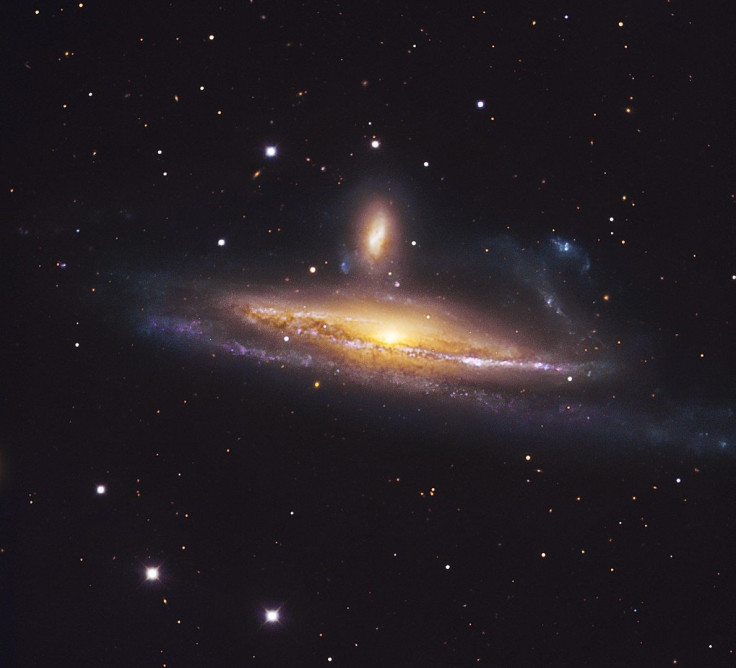NASA Observes Cosmic Cannibalism As Galaxy Devours Its Neighbor

KEY POINTS
- NASA's Chandra X-ray Observatory spotted a massive distant galaxy
- The galaxy is about to devour its smaller neighbor
- NGC 1532 will become more massive after consuming its neighbor
NASA recently observed a massive distant galaxy using its Chandra X-ray Observatory. According to the agency, this galaxy has an interesting background due to its cannibalistic behavior.
The agency spotted by Chandra has been identified as NGC 1352. It sits within the Eridanus constellation and is located about 50 million light-years from Earth’s neighborhood.
Like Milky Way, NGC 1352 is a spiral galaxy, which means its general appearance is characterized by its swirling cosmic arms. It is also classified as a barred galaxy due to the bar filled with stellar formations found across its central region.
From Chandra’s perspective, the galaxy appears at an edge-on angle, which means it can only be viewed from its side. If viewed face-on, NGC 1352 would be able to show off its massive size. According to NASA, the galaxy has a diameter of about 100,000 light-years, which makes it almost as wide as Milky Way.
Interestingly, NGC 1532 is not alone in the photo shared by NASA. The bright object floating above it is a dwarf galaxy known as NGC 1531. This smaller galaxy is currently locked within the gravitational pull of NGC 1352. Eventually, the larger galaxy will pull in NGC 1531 and successfully devour it.
Due to the size difference between the two galaxies, a massive collision will most likely not occur. Instead, NGC 1532 would probably end up consuming and absorbing its smaller galactic neighbor.
According to astronomer Martin Pugh, consuming smaller galaxies is how other galaxies grow into immense sizes. This cosmic cannibalistic process occurs commonly in the universe. For instance, Milky Way was able to reach its current size by devouring its small galactic neighbors.
“In fact, the practice is common in the universe and illustrated by this striking pair of interacting galaxies from the banks of the southern constellation Eridanus (The River),” Pugh wrote in NASA’s Astronomy Picture Of The Day website.
“Located over 50 million light-years away, the large, distorted spiral NGC 1532 is seen locked in a gravitational struggle with dwarf galaxy NGC 1531, a struggle the smaller galaxy will eventually lose,” he added.
© Copyright IBTimes 2024. All rights reserved.





















